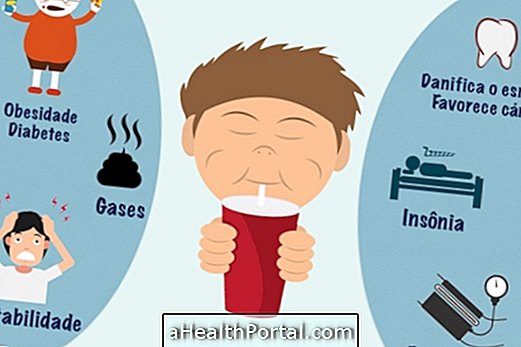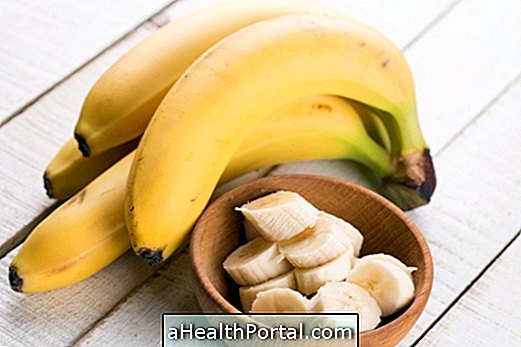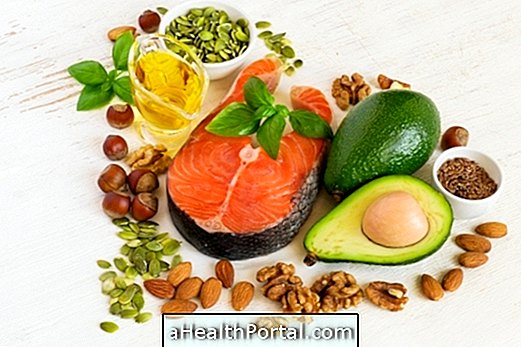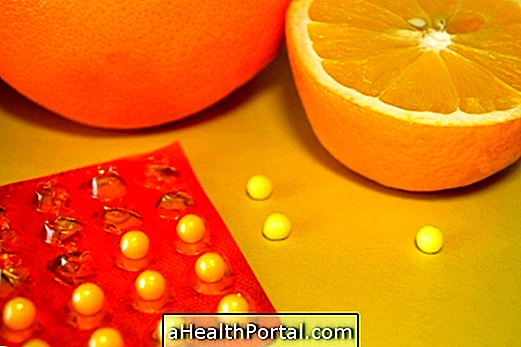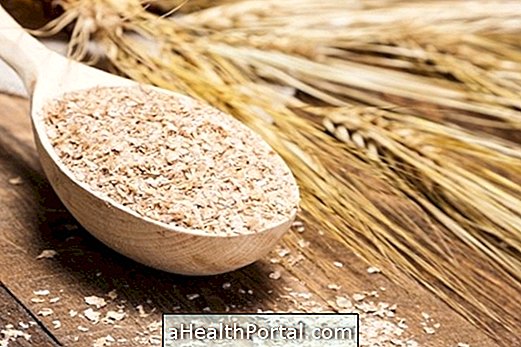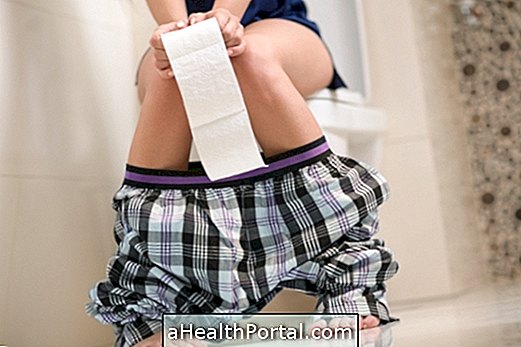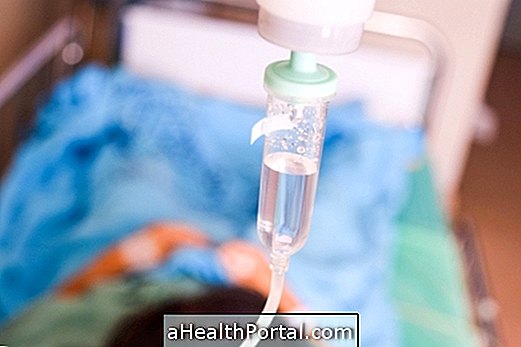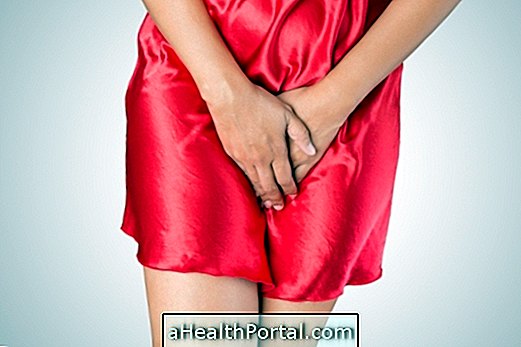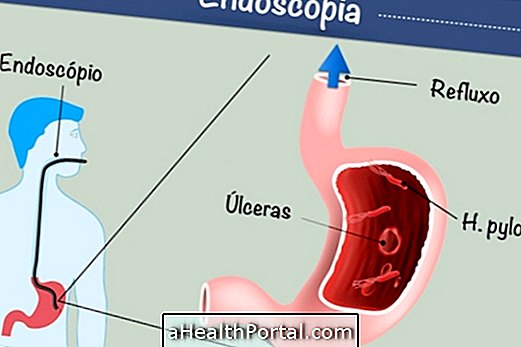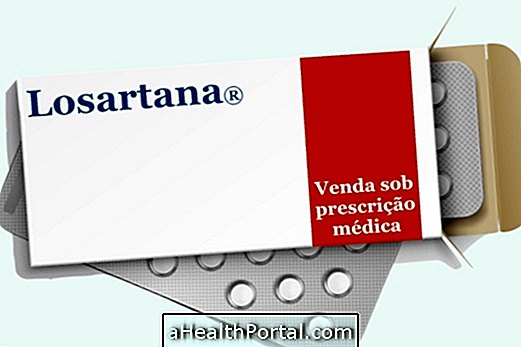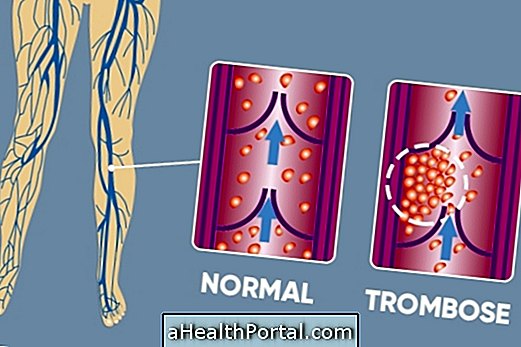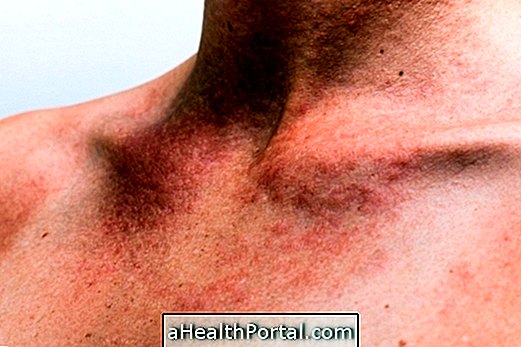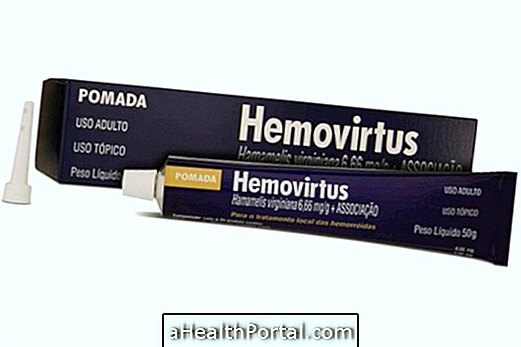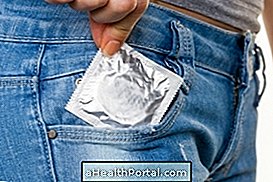To know if a food is good for consumption should pay attention to the color, consistency and smell, and these guidelines serve both meat, fish and chicken, as well as fruits, vegetables and vegetables.
Some guidelines that may be useful to know if a particular food is spoiled and consequently unfit for consumption are:
| Food | How to know if it's OK to consume |
| Remains of meals and desserts | Smell and stickiness |
| Raw meats | Evaluate color |
| Fish (raw or cooked) | Smell the smell |
| Raw egg | Place in a glass of water |
| Fruits | Evaluate appearance |
| Vegetables and veggies | Check the color and smell |
| Cheese | Observe color and texture |
| Milk and dairy products | Smell the smell |
Ready meals and desserts: Feeling the smell and stickiness
Viscous appearance, color change, and strong smell are indicative of spoiled food or dessert, which may even occur inside the refrigerator. This food or dessert should be thrown in the trash and your container should be washed with water, detergent and some bleach or bleach so that if properly disinfected for later use.
Raw meats: Check the color
If the meat is a little gray, green or blue is no longer good to eat. Pressing the meat a little on the meat also helps to identify the integrity of the food, because when it is viscous it should no longer be consumed, but when pressing the meat, it returns to normal soon after is still good to eat. The meat should be kept frozen in the freezer or freezer.

Raw or cooked fish: Feeling the smell
If the smell of the raw fish is very intense, with a brown or yellowish coloration and the eyes of the fish are not bright, the fish should not be consumed. Raw fish should be kept in the freezer or freezer and the cooked fish can be kept in the refrigerator but consumed in a maximum of 3 days.
Raw egg: Put in the water
Put the raw egg in a glass full of water and if the egg is in the bottom, it is good to eat, but if it floats, it is spoiled. The average duration of the eggs is up to 21 days after laying, which can be observed in your box. Eggs can be stored in the refrigerator or in a place away from light and with good ventilation.

Fruits: Make sure you have holes
When it does, it is a sign that the fruit has been bitten by insects and therefore may be contaminated and not eaten. To test you can cut the piece around and see if the rest is with the color and the normal smell, and if it is, that part can be used.
Vegetables and vegetables: Check the color and smell
When a part of the vegetable is damaged, cook the part that is good, for example, in the case of the carrot that has a spoiled part, do not use the good part of the carrot for the salad, but in the braised or to make a soup, for example. In the greens check that the leaves are yellowish, as it is a sign that you have lost chlorophyll and therefore no longer have all the nutrients. Choose those with firm green leaves.

Cheese: Observe color and texture
Hard cheeses even if they are moldy can be consumed after removing the spoiled part, but cheeses pasty should not be consumed if they are dry, greenish or moldy. The open cheese stored inside the refrigerator should be consumed within 5 days. Learn more details to identify if the cheese can still be consumed.
Milk and dairy products: Feeling the smell
The expired milk should be thrown away, inside the toilet for example. Milk opened in the refrigerator may be spoiled when it smells of sour and should not be consumed, even if boiled. Usually the milk lasts up to 3 days after it is opened.
How long does food last in the refrigerator?
The following table indicates the ideal temperature to keep food in the refrigerator and its shelf life:
| Food | Ideal temperature | Storage Time |
| Fruits and vegetables | Up to 10º C | 3 days |
| Cold cuts and dairy products | -At 8 ° C - Up to 6ºC - Up to 4ºC | -1 day - 2 days - 3 days |
| All kinds of raw meat | Up to 4ºC | 3 days |
- Raw fish - Cooked fish | - Up to 2ºC - Up to 4º C | - 1 day - 3 days |
| Remains of cooked meals | Up to 4ºC | 3 days |
| Desserts |
- Up to 8ºC - Up to 6ºC - Up to 4ºC | - 1 day - 2 days - 3 days |
Here's how to organize the refrigerator, what foods do not need to be stored inside the refrigerator, and how to store food for longer.
What happens when you eat a spoiled food?
When eating some food that is unfit for consumption food poisoning can occur that manifests itself through symptoms such as:
- Stomach ache;
- Intestinal colic;
- Gas and belching;
- Diarrhea.
These symptoms usually appear on the same day that the person ate the overdue or spoiled food and the intensity of these symptoms may vary depending on the amount that was ingested. The more you ingest, the worse the symptoms will be.
Although a food does not appear to be spoiled, it may be contaminated and in this case has no smell, altered color, or texture other than normal food. Thus, even though the egg is apparently good for consumption it may be contaminated with Salmonella and cause intestinal infection, for example. Contaminated food is as harmful to health as it is spoiled and can cause food poisoning that manifests itself through the same symptoms.
Food poisoning can last for 10 days. During this period one should always drink liquids like water, tea and natural fruit juice, and eat easily digestible foods such as cooked vegetables, grains and cereals. You should avoid milk, dairy products, meat and eggs so the digestive system recovers faster.
Here are 4 steps to treating a Food Poisoning at home.
Warning signs to go to the doctor
If you have any of these signs and symptoms that may indicate food poisoning, you should seek out an emergency room:
- Deep, hollowed eyes;
- Extremely dry skin;
- Intense abdominal pain;
- Diarrhea with blood;
- Fever above 38ºC.
The doctor will observe the person and may request a blood test, for example. Medicines like charcoal may be helpful in curing food poisoning faster, but antibiotics can also be indicated.
What to do if you buy a spoiled food
If you bought a food in the grocery store or the market and suspect that it is damaged you can complain at the establishment where you bought along with the purchase note. This can be done by identifying the spoiled food on the day it was purchased and being able to ensure that the food was brought home under proper hygienic conditions.
ANVISA, the National Sanitary Safety Agency, suggests that a complaint be made to the sanitary surveillance service of your city and therefore it may be necessary to go to the city office to find the address and telephone number of the right place to file a complaint.
The establishment may only return the money or exchange for a similar product that is fit for consumption because the purchase of a spoiled food does not guarantee the consumer indemnification for moral damages, it is necessary to hire a lawyer who analyzes the situation and indicates the best strategy for each case.
